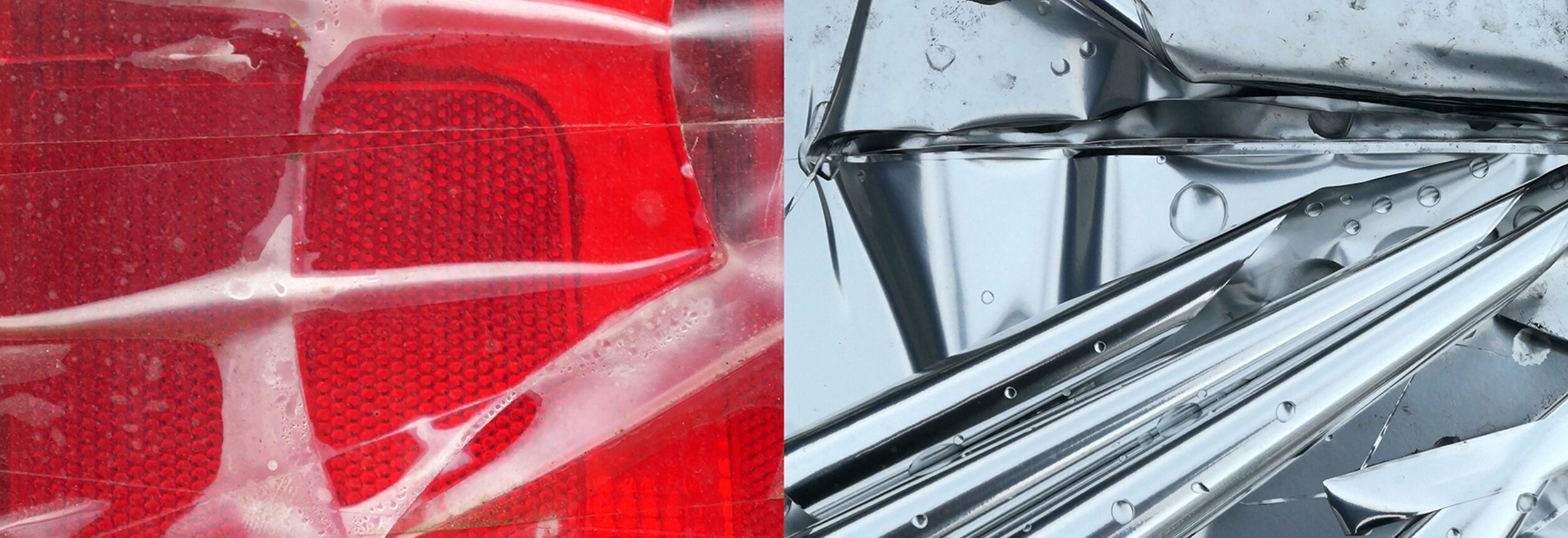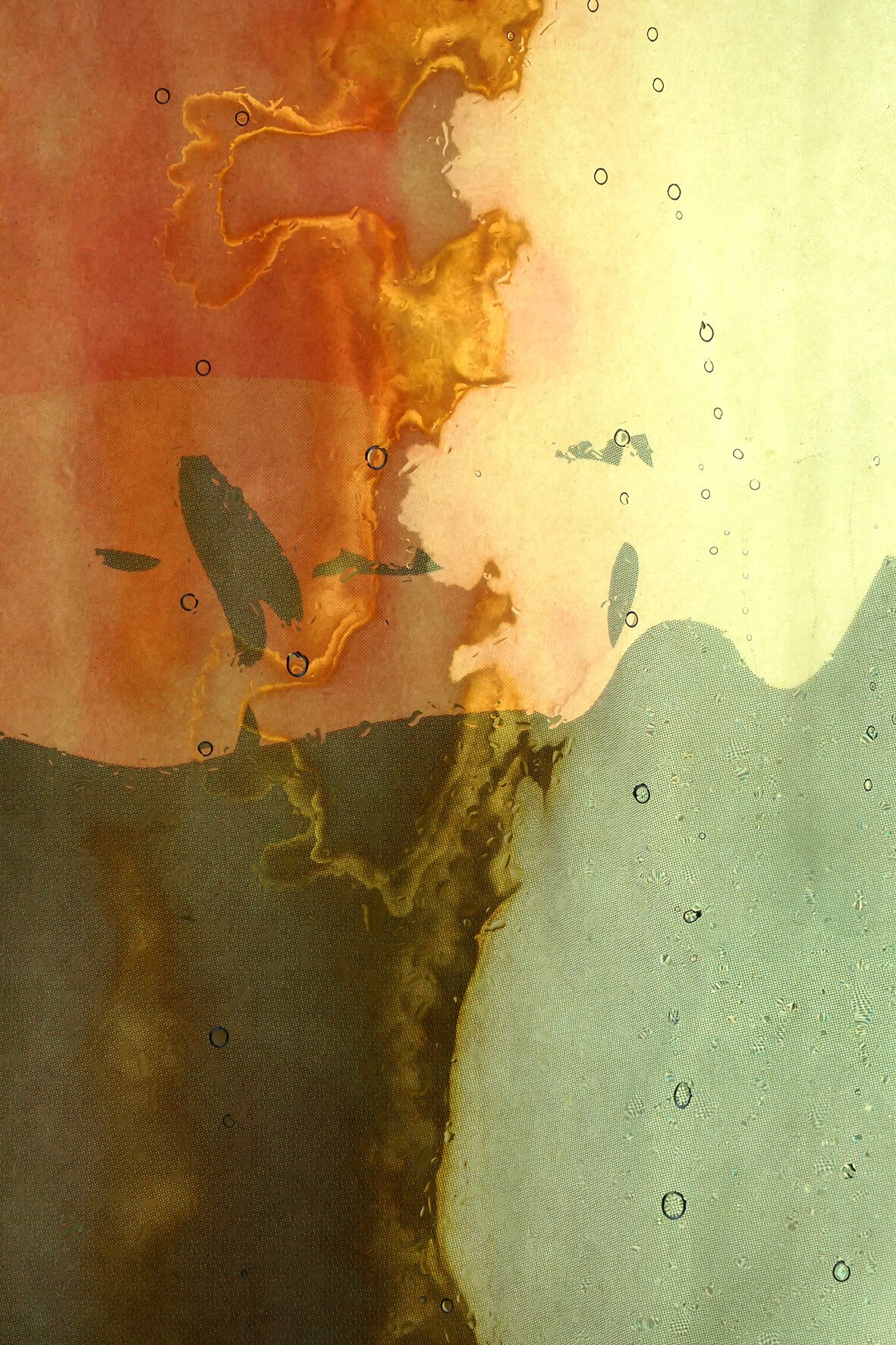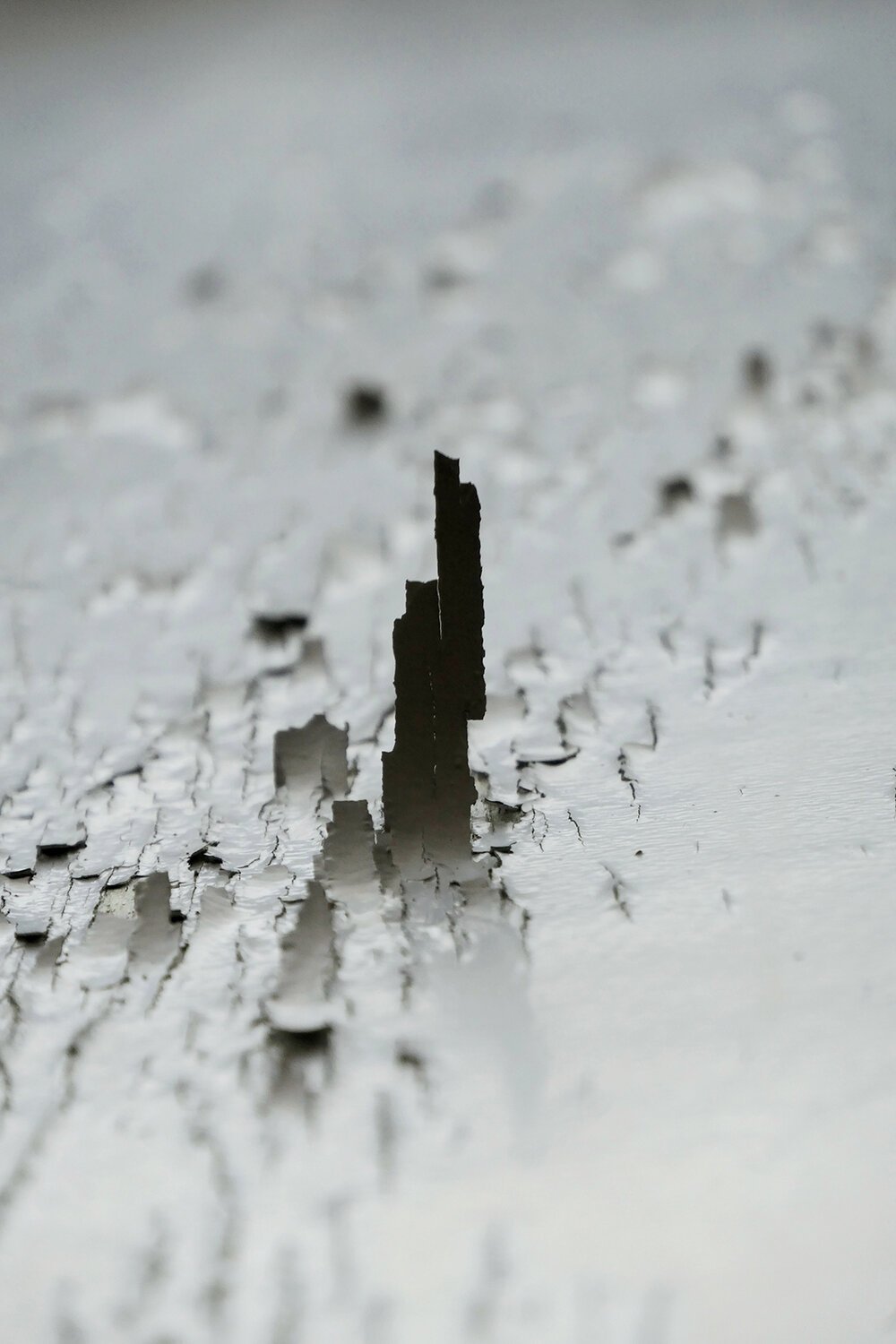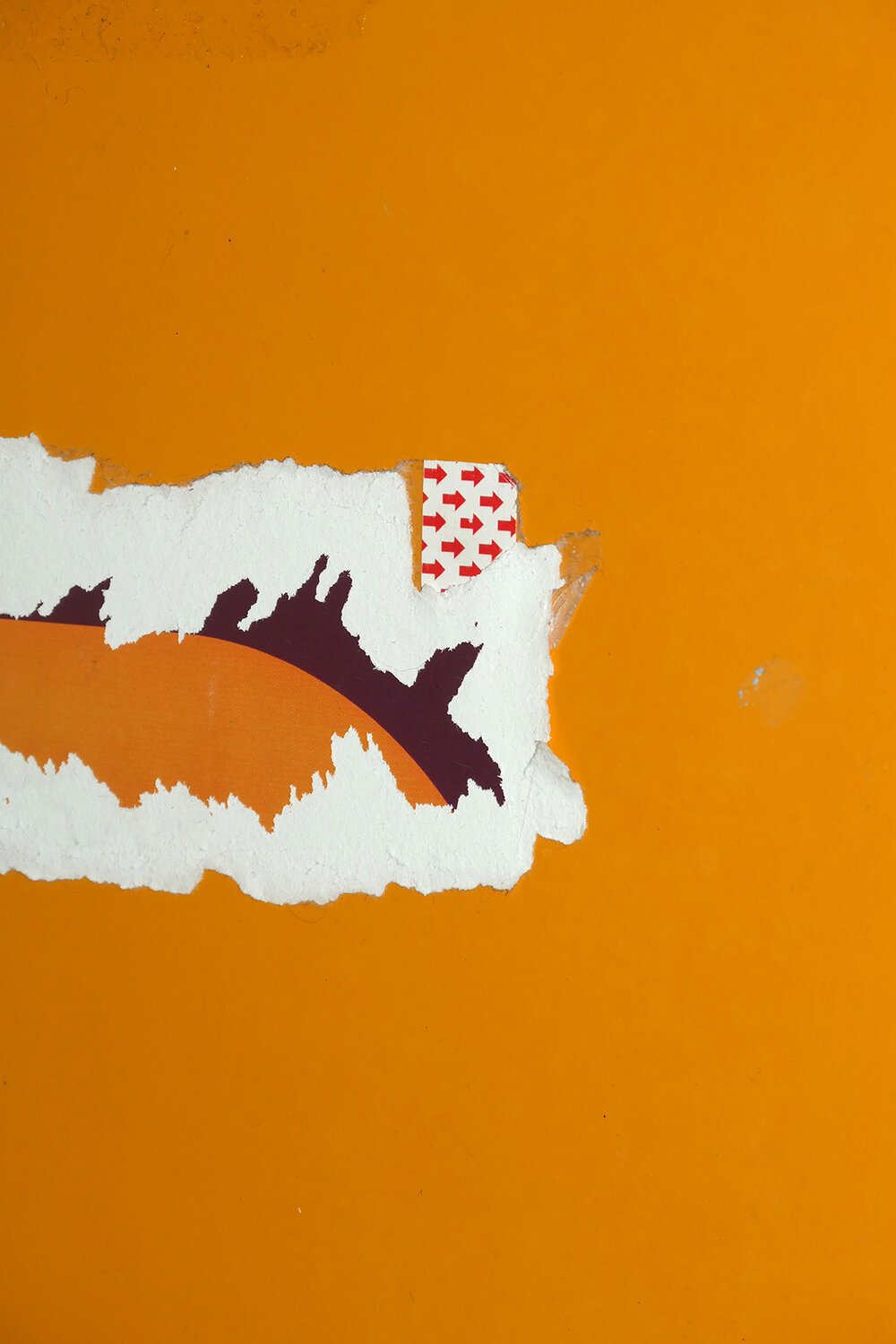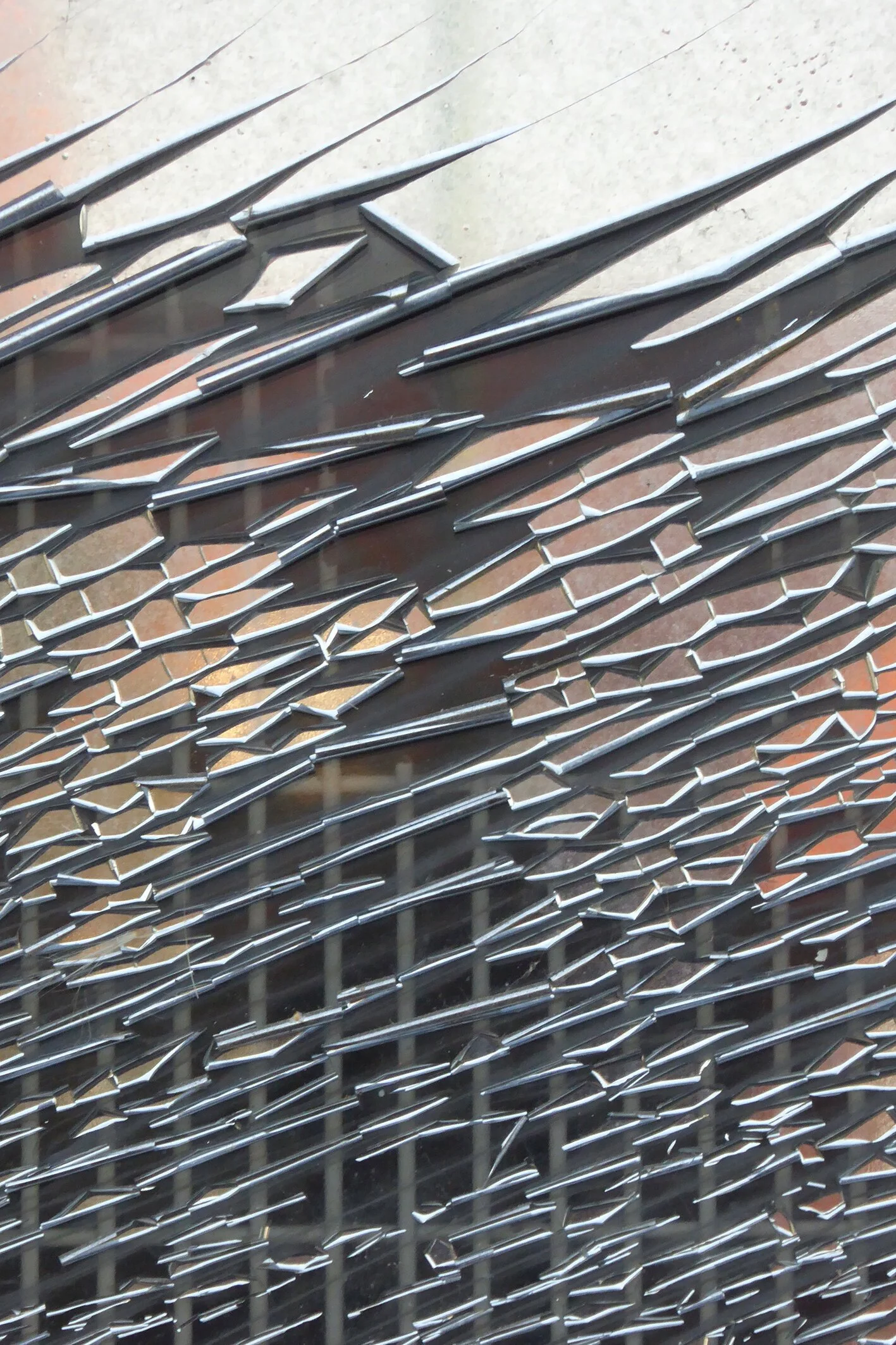Tyrone Williams: Deconstructions
June 14th, 2021
Joint winner of the first ever season of The Great British Photography Challenge, BBC4, Tyrone Williams has been practising photography for ten years. Creating for himself a unique and abstract eye, each of his images finds the unseen and re-presents it to the viewer away from wider context. These pieces asking us to find our own interpretation and inspiration from the everyday glitches in the urban environment. Here, Public Offerings Ltd. speaks to Tyrone to find out more of his background, what is was like taking part in The Great British Photography Challenge, and what inspired his latest series of work, Deconstructions.
POL: Hi Tyrone! First up, can you introduce yourself and how you would describe your photography?
TW: My name is Tyrone Williams, I've been taking photos for just over 10 years. My photography has always stemmed from using my camera as a photographic diary, capturing subjects that inspire everyday life. This has pushed me into turning the ordinary surroundings into visual abstraction.
POL: How did you get into photography? What drew you to it as a medium?
TW: When I was a teenager, I used to rollerblade with my cousins. Using a disposable camera, I would photograph us doing half decent (or at least we thought at the time) tricks.
I've always been drawn to creative outlets such as dance, music and fashion. I began to love photography when I realised how much freedom it offered. I was fascinated how you can use a single frame and turn it into a visual experience. Through the complexities of composition, you can really express a type of emotion through how you portray the subject.
POL: Where do you get your inspiration for your work?
TW: My inspiration comes from my personal experiences and emotions. These ultimately affect my outlook on the world and I use my camera to express myself through the lens. I've always looked at life with wonder, the camera has helped me keep my curiosity and fire for being creative.
“I’ve always looked at life with wonder, the camera has helped me keep my curiosity and fire for being creative.”
POL: How did you find your style?
TW: My style has developed over the years, through experimenting with compositions to really understand what I want to express through my subjects. Once I found my own natural signature, I knew I wanted to use this technique and pursue it further.
POL: What’s your process when creating work?
TW: I tend to photograph a lot of my work when I go for a run. I use a compact camera and go to areas that I've never been to before. This is mostly industrial and urban areas in my hometown. I don’t set out to capture a specific subject, I let the subject speak to me.
POL: What made you apply to be part of The Great British Photography Challenge?
TW: I applied to be part of the show because I felt it was an exciting opportunity to get firsthand experience in the photography industry and it would be a great platform form for me to showcase my style of work.
POL: How did you find your time on the show?
TW: I had such a fun experience, meeting new friends who are all passionate about photography. Although we had different styles, we were able to support and learn from each throughout the series. It did come with its challenges at times, but overall, it was amazing to meet so many people involved in the photography world, it was a real eye opener.
POL: What was it like getting feedback from Rankin?
TW: I'd always listen to Rankin’s advice and take what I needed from it. He has so much experience and I wanted to use that as inspiration for mine. I have a lot of respect for Rankin, he has challenged my perspective and got me to dive deeper into my own practice
POL: If you could do anything again from the show, is there anything you would do differently?
TW: I look back at some of my ideas for the challenges and think I could have approached them differently. Especially the fashion-based and iPhone challenges, as I think they could have been stronger and more in line with my style. However, I was very happy with the exhibition and how I pieced all the challenges together.
POL: Has being part of the show changed how you approach your own work?
TW: I think it's given me confidence in my own perspective of photography and to be a bit more “all or nothing” when it comes to executing an idea.
“I don’t set out to capture a specific subject, I let the subject speak to me.”
POL: Is there anything the audience didn’t see which you found particularly useful?
TW: I often went shooting in the morning before the challenges, to “warm up” taking images and to keep inspired!
POL: What would your advice be to someone thinking about applying for the next season or to another similar show?
TW: Always be willing to learn more about your craft, be open to new perspectives, challenges and have fun! If you're thinking about putting your work out there on a big scale like this, just do it!
POL: What was the biggest thing you learnt? What are you taking forward with you when making your new work?
TW: The biggest thing I have learnt is to be open to how your work can be perceived. Listening to different perspectives can help your work find meaning.
POL: Your new series is being called Deconstructions, it’s an evocative title which can be read many ways - what does it mean to you and how does it represent your art?
TW: This work is based on the pieces of inspiration I get in urban spaces. Through capturing different elements, I'm trying to show a visual beauty in what's hidden away.
This represents the freedom on what we can make as an image, and challenges old perspectives in these types of spaces. This is about loud expressions in the quiet and overlooked subjects.
“Through capturing different elements, I’m trying to show a visual beauty in what’s hidden away.”
POL: We notices you use phrases like “deconstruct” and “reconstruct” when talking about a lot of your abstract pieces - what does this mean to you? What turns you off from shooting works which are representational.
TW: Seeing subjects as forms, shapes and colour is a way of deconstructing the representational, and taking them out of their original context. This allows me to create something new out of these elements, piecing them together into an image. Getting in touch with the overlooked and the broken world, gives me a chance to re-assemble it.
POL: How did you find your images? What draws you to a particular place?
TW: I try to go to areas that are usually in constant change. For instance, town and city centres are a gold mine for finding subjects, as these places are vibrant and represent the rawness of the urban landscape.
POL: Your images look at the small, taken away from the larger world, and in that way, they seem almost meditative. Is your process of creating images a slow one? How do you block out the rest of the visual noise when shooting?
TW: When I am drawn to my subjects, I capture them within moments of setting eyes on them. I swiftly visualise how I want to portray them and make prompt decisions. I want to capture the subject with certainty without over-thinking it, it’s almost intuitive.
Keeping out certain details, to really get to the heart of what to express though the subject, is key for me. But, in contrast, keeping in certain information to highlight the core of what I’m trying to express is key also. It’s a delicate balance.
“Keeping out certain details, to really get to the heart of what to express though the subject, is key for me.”
POL: Are the crops as you take the images in camera or do you shoot wider and crop in for your final image?
TW: My images are straight out of the camera, the fun for me is getting the composition right while I'm out shooting! For me it gives me discipline to capture the image how I see it first time.
POL: There are very few straight lines in your work and a distinct lack of perfection in your subjects - What draws you to the broken, torn or damaged?
TW: I find the broken subjects allow me the opportunity to create a more abstract image. It gives less indication on what the subject is and ultimately is more open for interpretation
We build straight lines and build up our expectations of what “perfection” is. But I'm showing the elements in a state that is glitched from what that notion of “perfection” is. Showing the fragility and tangibility of our expectations. Perfection is a perspective that I'm trying to challenge.
“Perfection is a perspective that I’m trying to challenge.”
POL: You’ve said your work reflects you, what is it saying about you?
TW: That I like to look beyond the world that is presented to us.
POL: You seem to be drawn to reds, oranges and yellow - very bold and dramatic colours - why do you think this is?
TW: To me orange and yellow represent being hopeful and full of optimism. Whilst red is the loudest of all colours. These colours are very expressive and I like creating loud abstractions.
“For me, entering into the visual language of the image, I would compare it to how I would experience music or design. A harmony of patterns, textures and formation, that comes together to express something.”
POL: Looking at your pieces they do sometimes trigger the viewer's pareidolia [seeing shapes or faces in the abstract] - do you see these personalities and faces when you’re shooting? What do you see in your images?
TW: I don’t intentionally go for subjects that I think look like faces, but I think the more abstract the image, the more this leaves the viewer the chance to piece together work and see what they want in it.
For me, entering into the visual language of the image, I would compare it to how I would experience music or design. A harmony of patterns, textures and formation, that comes together to express something.
POL: If time and money were no object what would your dream project be?
TW: I would love to venture off into the streets of the Japanese cities one day to make a project.
POL: What are you working on now? What’s next?
TW: I'm currently shooting and experimenting with the presentation of my subjects. I'm also releasing a collaborative book called Ordinary Fragments 3 in the coming months.
POL: This has been great, thanks Tyrone!
The Great British Photography Challenge is available for catch-up on BBC iPlayer.
About Tyrone Williams
Tyrone Williams, 28, from Northampton, has been practising photography for over ten years, alongside working as a Graphic Designer.
Starting off taking photos with disposable cameras and point and shoot 35mm film cameras, Williams uses his photography as a visual diary, focusing on the unnoticed things around him in his life. Using his photography to redefine what people consider beautiful, and to show the beauty in life’s imperfections.
